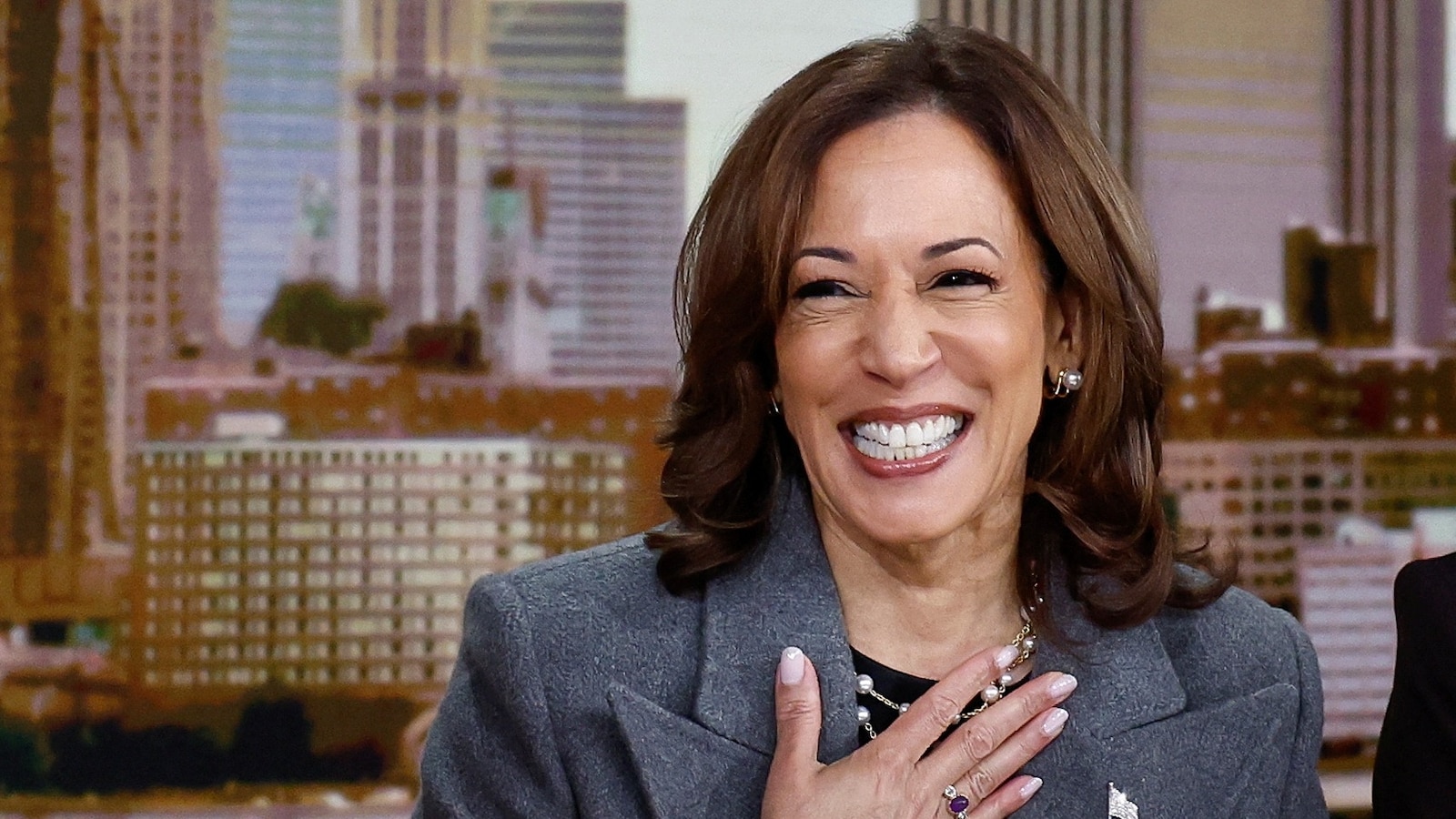NEW YORK — Vice President Kamala Harris is in the midst of a burst of media appearances designed to introduce her to a range of voters with just a month to go in a close election, but it’s gotten rocky at times — giving former President Donald Trump and his running mate, Sen. JD Vance, an opening to attack.
Harris spent Tuesday in New York City sitting for three interviews — all of them different formats and popular with different audiences.
But twice during that swing, Harris appeared unprepared to answer how she would govern differently from President Joe Biden, a key part of her campaign to differentiate herself from the Biden record that polls show voters highly disapprove of.
Appearing on ABC’s “The View,” when asked what she would have done differently than Biden over the last four years, Harris said, “there is not a thing that comes to mind,” before citing, much later in the interview, her pledge to put a Republican in her Cabinet.
Trump immediately seized on her answer, calling her response “her dumbest answer so far” and criticized her for “being exposed as a ‘dummy’ every time she does a show.”

Democratic presidential nominee and Vice President Kamala Harris reacts, as she appears on ABC’s “The View” in New York, Oct. 8, 2024.
Evelyn Hockstein/Reuters
At a rally in Michigan, Vance, mocked Harris, saying, “so, you think after all this time, all this time of thinking about how she would do things differently from Joe Biden.”
Later, appearing on CBS’ “The Late Show with Stephen Colbert” for another friendly interview, Harris was asked the same question. She responded, “well, I mean, I’m obviously not Joe Biden. So, that would be one change.”
Earlier in the 30-minute conversation on “The View,” she introduced a new proposal to expand Medicare to offer home health care, a policy targeted at the “sandwich generation” of adults who might help care for their aging parents.
The campaign’s choice to spotlight the proposal on “The View” was deliberate: the show attracts a sizable amount of middle-aged women — viewers who might qualify as part of the “sandwich generation.”
Harris then ducked into Howard Stern’s studio for an extensive interview with the famed radio host, whose audience of mostly men exposed Harris to a vastly different group of voters than the largely female viewership of “The View.”
Meanwhile, Harris last week taped interviews with the “Call Her Daddy” podcast, which touts itself as Spotify’s most-listened to podcast by women, as well as with “60 Minutes” — airing Sunday and Monday, respectively.
All together, Harris in just a few days covered a large portion of the media spectrum.
Her campaign is betting that such an approach will reach a broader electorate than a press strategy flooded with sit-downs with traditional news outlets, and it is taking no chances with all seven battleground states seemingly up for grabs.

Democratic presidential nominee and Vice President Kamala Harris appears next to Whoopi Goldberg as a guest on ABC’s “The View” in New York, Oct. 8, 2024.
Evelyn Hockstein/Reuters
Additionally, Harris aides like that interviews with people such as Stern give Americans the chance to see Harris beyond just her policies. Her conversation with Stern, an avid Harris supporter, led to conversations about her love for Formula One racing and her favorite cereals — though the hourlong interview also delved into key electoral issues such as immigration, crime and reproductive rights.
But skirting more traditional interviews may deprive voters the real-time fact-checking and dissection of candidates’ policies that often come with such interviews.
Critics have pounced on Harris for her lack of engagement with mainstream media. Prior to the “60 Minutes” sit-down, Harris sat in August with CNN’s Dana Bash, though she was flanked by her running mate, Minnesota Gov. Tim Walz, and in September with MSNBC’s Stephanie Ruhle.
She also sat for a dense, policy-focused interview with three reporters at a National Association of Black Journalists event, and she occasionally speaks spontaneously with reporters while on the road.
In these settings, Harris has, at times, struggled to speak in-depth about her current policy proposals and to defend her changes in position on certain issues.
Harris’ media blitz will continue in Las Vegas on Thursday, when she sits for a Univision town hall.
